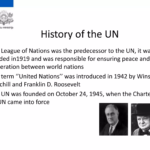The 2022 Nobel Prize in Physiology or Medicine: Basics Explained

The 2022 Nobel Prize in Physiology or Medicine is awarded to Svante Pääbo for his discoveries concerning the genomes of extinct hominins and human evolution. The relationship between Homo sapiens and extinct hominins has long been a topic of great interest.
Through his pioneering research, Svante Pääbo accomplished something seemingly impossible: sequencing the genome of the Neanderthal, an extinct relative of present-day humans. He also made the sensational discovery of a previously unknown hominin, Denisova. Importantly, Pääbo also found that gene transfer had occurred from these now extinct hominins to Homo sapiens following the migration out of Africa around 70,000 years ago. This ancient flow of genes to present-day humans has physiological relevance today, for example affecting how our immune system reacts to infections.
FACTS AND FIGURES
Alfred Nobel (1833-1896), the inventor of dynamite and holder of 355 patents, established the Nobel Prizes “for the Greatest Benefit to Mankind”. The foundations for the prize were laid in 1895 when Alfred Nobel wrote his last will, leaving much of his wealth to the establishment of the Nobel Prize. The first Nobel Prizes were awarded in 1901, five years after Nobel’s death. Since 1901, the Nobel Prize has been honoring men and women from all corners of the globe for outstanding achievements in physics, chemistry, physiology or medicine, literature, and for work in peace. In 1969, another prize was added “The Sveriges Riksbank Prize in Economic Sciences in Memory of Alfred Nobel”. The Prize includes a Nobel diploma, a medal, and 10 million Swedish crowns per prize. All Nobel Prizes are awarded in Stockholm, Sweden, except for the Nobel Peace Prize, which is awarded in Oslo, Norway. Norway and Sweden are situated in Scandinavia, northern Europe. Oslo is the capital of Norway and Stockholm is the capital of Sweden.
LEARNING FROM HOME/WITHOUT CLASSES/BASICS
The human genome: A genome is like a genetic instruction manual — it contains all the information an organism needs to grow and function. The human genome is written in DNA, and while your exact genome is unique to you, about 99.9% of it is identical across all people.
When we talk about “sequencing” the genome, we mean writing out the DNA bases (C, G, T, and A) in the order they appear in most people. This sequence can then serve as a reference guide for research into human biology, evolution, diseases, and more.
What is DNA
DNA, or deoxyribonucleic acid, is the hereditary material in humans and almost all other organisms. Most DNA is located in the cell nucleus (where it is called nuclear DNA), but a small amount of DNA can also be found in the mitochondria (where it is called mitochondrial DNA or mtDNA). Mitochondria are structures within cells that convert the energy from food into a form that cells can use.
The information in DNA is stored as a code made up of four chemical bases: adenine (A), guanine (G), cytosine (C), and thymine (T). Human DNA consists of about 3 billion bases, DNA bases pair up with each other, A with T and C with G, to form units called base pairs. Each base is also attached to a sugar molecule and a phosphate molecule. Together, a base, sugar, and phosphate are called a nucleotide. Nucleotides are arranged in two long strands that form a spiral called a double helix. An important property of DNA is that it can replicate, or make copies of itself.
In the nucleus of each cell, the DNA molecule is packaged into thread-like structures called chromosomes. Each chromosome is made up of DNA tightly coiled many times around proteins called histones that support its structure.
In humans, each cell normally contains 23 pairs of chromosomes, for a total of 46. Twenty-two of these pairs, called autosomes, look the same in both males and females.
The 23rd pair, the sex chromosomes, differ between males and females. Females have two copies of the X chromosome, while males have one X and one Y chromosome.
A gene is the basic physical and functional unit of heredity. Genes are made up of DNA. Some genes act as instructions to make molecules called proteins. However, many genes do not code for proteins. Every person has two copies of each gene, one inherited from each parent.
Ribonucleic acid (RNA): A nucleic acid molecule similar to DNA but containing ribose rather than deoxyribose. RNA is formed upon a DNA template. There are several classes of RNA molecules.
They play crucial roles in protein synthesis and other cell activities.
DNA COMPARISON WITH RNA
|
Comparison |
DNA |
RNA |
|
Full Name |
Deoxyribonucleic Acid |
Ribonucleic Acid |
|
Function |
DNA replicates and stores genetic information. It is a blueprint for all genetic information contained within an organism |
RNA converts the genetic information contained within DNA to a format used to build proteins, and then moves it to ribosomal protein factories. |
|
Structure |
DNA consists of two strands, arranged in a double helix. These strands are made up of subunits called nucleotides. Each nucleotide contains a phosphate, a 5-carbon sugar molecule and a nitrogenous base. |
RNA only has one strand, but like DNA, is made up of nucleotides. RNA strands are shorter than DNA strands. RNA sometimes forms a secondary double helix structure, but only intermittently. |
|
Length |
DNA is a much longer polymer than RNA. A chromosome, for example, is a single, long DNA molecule, which would be several centimetres in length when unravelled. |
RNA molecules are variable in length, but much shorter than long DNA polymers. A large RNA molecule might only be a few thousand base pairs long. |
|
Sugar |
The sugar in DNA is deoxyribose, which contains one less hydroxyl group than RNA’s ribose. |
RNA contains ribose sugar molecules, without the hydroxyl modifications of deoxyribose. |
|
Bases |
The bases in DNA are Adenine (‘A’), Thymine (‘T’), Guanine (‘G’) and Cytosine (‘C’). |
RNA shares Adenine (‘A’), Guanine (‘G’) and Cytosine (‘C’) with DNA, but contains Uracil (‘U’) rather than Thymine. |
|
Base Pairs |
Adenine and Thymine pair (A-T) Cytosine and Guanine pair (C-G) |
Adenine and Uracil pair (A-U) Cytosine and Guanine pair (C-G) |
|
Location |
DNA is found in the nucleus, with a small amount of DNA also present in mitochondria. |
RNA forms in the nucleolus, and then moves to specialised regions of the cytoplasm depending on the type of RNA formed. |
|
Reactivity |
Due to its deoxyribose sugar, which contains one less oxygen-containing hydroxyl group, DNA is a more stable molecule than RNA, which is useful for a molecule which has the task of keeping genetic information safe. |
RNA, containing a ribose sugar, is more reactive than DNA and is not stable in alkaline conditions. RNA’s larger helical grooves mean it is more easily subject to attack by enzymes. |





0 Comments